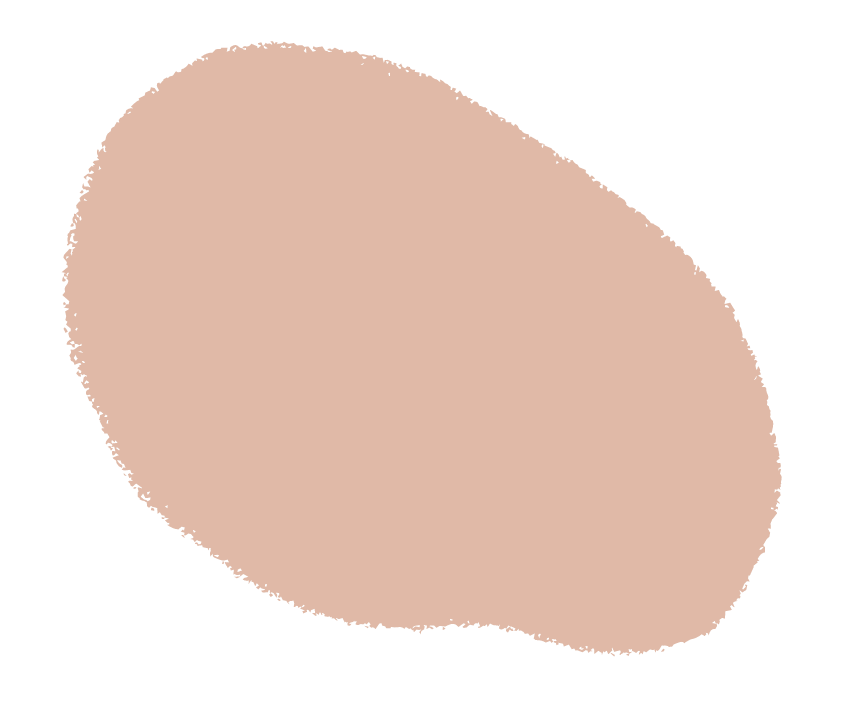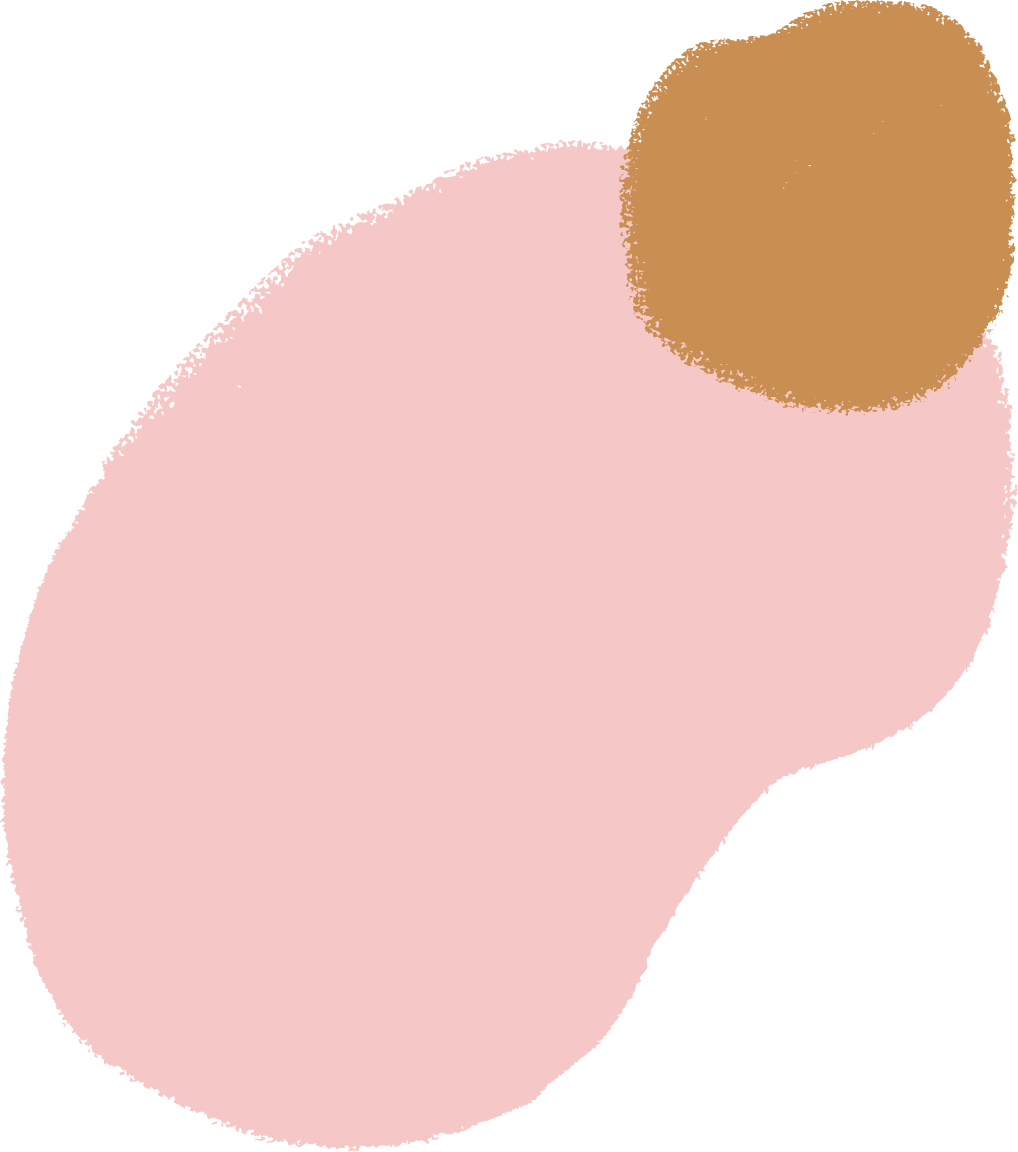
Today we’re introducing a guest author, who has kindly taken time out of her day to help us to support women in our community who are curious about their pelvic floors postpartum.
Christina Kliewer has been a physiotherapist for 12 years and a pelvic floor physio since 2017. She received her BSc in Biology from the University of the Fraser Valley and her MPT from the University of British Columbia. She and her husband have 4 wonderfully busy kids and a crazy dog. She currently works in private practice at Fraser Birth Collaborative and Langley Physio and Massage Clinic.
Without further ado – here’s Christina.
Our initiation into motherhood doesn’t always go according to our plans.
Our birth plans might not go as we hoped, we may have unexpected C-sections instead of vaginal births, breastfeeding turns out to be more of a challenge than we ever anticipated, and there are (so many) moments when we just need some down time alone – but the baby is crying for us (again).
And in the midst of all the sleepless nights and adjustments to our new lives, we have this societal expectation to somehow “bounce back” to our pre-pregnancy bodies.
If you’re here reading this blog, you may be newly postpartum, awake in the late hours with a nursing baby, scrolling for information on how to get your pre-baby body back, how to strengthen your pelvic floor, how exactly to do kegel exercises, etc.
Just keep in mind that when you’re ready to start exercising, it’s crucial to have your core and pelvic floor assessed first – especially before beginning a training program or starting impact exercise. You don’t want to hurt yourself by jumping into anything too hard or too soon.
In this blog, I am going to talk about pelvic floor exercises, including when and how to do them safely, what you should know before you get started, why they’re good for you, and more.
Keep reading to learn:
- What is the pelvic floor and why is it important?
- The most common postpartum pelvic floor issues
- Pelvic floor physiotherapy: symptoms of dysfunctions and how to find help
- When can you start pelvic floor stretches postpartum?
- Top 5 pelvic floor stretches for postpartum women
- Pelvic floor stretches – FAQs
What is pelvic floor physiotherapy and why is it important?
The pelvic floor is a sling of muscles that make up the bottom (or floor) of your core. Primarily, these muscles are here to help you with functions like:
- Supporting pelvic organs (your bladder, your reproductive organs, your bowels)
- Sexual function
- Bowel and bladder control
- Birth
Weak pelvic floor muscles can lead to pelvic floor dysfunction over time. This means that the pelvic floor struggles to relax correctly or coordinate your muscles properly. This makes it hard for your body to work properly. You might struggle with constipation (straining to use the washroom), or incontinence (having fluids leak).
It’s okay – if you’ve just had a baby, you shouldn’t be panicking about these things right now. It’s always good to know about women’s health and your body’s wellbeing, but it’s important that you take this slow.
Like with any muscle training routine, you need to warm up, start light, and focus on steady repetitions over time – rather than just diving straight into heavy or intense workouts today that can cause injury.
Tell me more about the pelvic floor
So, the reason women can have babies is there is no boney support under the pelvis. We rely on muscles to keep our organs in the correct spot, and to keep urine and stool inside us.
Imagine the bladder as a balloon held closed with your fingers.
Can you picture how pressing down on the balloon on the top or sides puts increased pressure on the seal? If the pressure is too much like when you sneeze, cough or bend down into a squat sometimes that pressure is too much for the seal and you can get some leaking from your bladder or even your bowels.
Strengthening the pelvic floor muscles can help support your bowel and bladder. This can help reverse incontinence or prolapse and get you back doing the activities that you love. However, sometimes the goal should be to decrease muscle activity, especially if pain is involved.

Pelvic floor physiotherapy: What are the most common pelvic floor issues?
I’ve been a pelvic floor physiotherapist for 7 years and in that time, I’ve worked with hundreds of postpartum moms around their pelvic floor rehabilitation, including tips and recommendations for pelvic floor muscle physiotherapy, biofeedback support, and more – and beyond that, I know I’ve struggled with these things personally after each of my four babies.
In my professional practice, the most common pelvic floor dysfunctions that I see are:
- Bladder or bowel incontinence
- Pelvic organ prolapse
- Pain either from activity or sex (tailbone, vulva, pubic symphysis or core muscles)
What are the symptoms of pelvic floor dysfunctions?
Incontinence refers to the uncontrollable leakage of urine (or sometimes stool). Incontinence can be both embarrassing and uncomfortable for women experiencing this symptom. Women may experience incontinence following damage to their pelvic floor after birth (especially traumatic birth experiences), or after they have gone through menopause.
Organ prolapse, or pelvic organ prolapse (POP), may take place when weakened muscles in your pelvis cause one or more of the organs which reside there (vagina, uterus, bladder, rectum) to sag. In mild cases, this may cause incontinence, discomfort during sex, or difficulty passing urine or stool. In quite serious cases, POP may lead to bulges (either into other organs, or bulges outside your body). There are both conservative treatments which involve pelvic floor strengthening and in more serious or extreme cases, sometimes surgical treatment methods (such as surgeries) to repair prolapse are required.
Ongoing pain may sound self-explanatory, but there are several forms that present themselves specifically as symptoms of pelvic floor disorders. Pain during sexual activity (also called dyspareunia) can be extremely upsetting for couples, and often requires tailored support with a pelvic floor physiotherapist to determine if muscles need to be relaxed or desensitized.
It is very important to work with a physiotherapist to address ongoing pains, especially those in the tailbone, pain in the vulva (also called vulvodynia) or more commonly vestibulodynia which is pain in the vaginal vestibule (the triangle from the vaginal entrance to where the labia come together), pain or inflammation of the pubic symphysis (or the joint between your pubic bones), or in your core muscles – all of which help to support your pelvic floor.
If you had a traumatic birth or a C-section, some pelvic floor exercises can be very painful and exacerbate problems. Find a physiotherapist who specializes in postpartum women’s health so you get a list of pelvic floor stretches and exercises that are best for your body.
Pelvic floor physiotherapy: Are the symptoms you’re experiencing signs of dysfunction?
As with our birth plans, our postpartum recovery doesn’t always go as planned.
If you believe you are experiencing pelvic floor dysfunction, it may be because you’re experiencing one or more of these symptoms:
- Frequent visits to the bathroom, or feeling like you “always have to go”
- Having to frequently stop and start when trying to pee
- Straining to push or pass a bowel movement
- Changing positions on the toilet in order to pass stool
- Constipation
- Leaking fluids (incontinence, either stool or urine)
- Painful urination
- Unexplained pain in your lower back
- Pain during sex
- Ongoing pain in your pelvic region
What is pelvic floor physiotherapy?
The first thing to remember is that muscles can recover and adapt. If you are leaking or having pain during sex, working with a pelvic floor physiotherapist can help.
Pelvic floor physiotherapists have post-graduate training in:
- Internal examinations for a full assessment of women’s health
- Pelvic floor rehabilitation
- Pain science (the study of pain and how it impacts both body and brain)
Research indicates that proper pelvic floor contractions can be difficult to achieve without guidance, often requiring specialized techniques such as EMG-biofeedback, which is a real time image of your muscle activity to help assess your muscle function.
What is EMG-biofeedback?
Many people need training to fully understand how to do proper pelvic floor contractions (also known as Kegels). It’s difficult, because unlike with most of our muscles, you can’t actually see what you’re doing. Where most of our muscles are relatively easy to work on, like our biceps, the pelvic floor is more subtle.
The brain-body connection needs to be properly trained with the correct technique. Learning how to effectively contract and relax your pelvic floor is crucial as you rehabilitate postpartum, and as you age to prevent problems from occurring later.
One of the best ways to train the brain-body connection is with EMG-biofeedback. A study with pregnant women showed that even one session of EMG-biofeedback improved proper contraction techniques and muscle firing to help with issues like incontinence – and the research suggests that it’s helpful even for women who aren’t currently experiencing symptoms of incontinence to help strengthen those inner muscles!
This study recommended that all pregnant women would benefit from having a biofeedback session even if they didn’t have incontinence in order to learn how to contract the muscles effectively and prevent issues from arising.
Now that you know what the symptoms and long-term struggles may be with a weakened pelvic floor, let’s talk about what you can do about it.

Pelvic floor physiotherapy at home: when to begin pelvic floor stretches postpartum
Rehabilitating your pelvic floor is extremely important as you move forward through the months and years following the delivery of your baby or babies.
Yet, saying something is important and actually finding the time and energy to do it are two very different things.
The best and most important postpartum tasks are bonding with your baby, taking care of yourself by getting enough sleep, going for walks (especially good for your mental health) and eating healthy.
I’m sure I’m not alone in the fact that I usually put myself last, resulting in tanking my resources and existing on minimal sleep.
How can we fully care for our babies while still taking care of ourselves?
I agree that it is hard to do – and it’s also important. When you feel like you have capacity to begin strengthening your pelvic floor here are some important things to consider around the time frame and postpartum exercise.
Is there a medical time limit on when you can start pelvic floor muscle physiotherapy?
According to the American College of Obstetricians and Gynecologists (ACOG), exercise postpartum can strengthen abdominal muscles, boost your energy, promote better sleep, relieve stress, and can help to prevent postpartum depression.
That being said, the ACOG also acknowledges that when and how you get back into exercise may be impacted by the type of delivery you had. If you had a C-section or experienced complications during the delivery of your child(ren), you should speak with your healthcare provider before you start exercising again.
Many women wonder when they can return to high impact or intense exercise postpartum, but that needs to be assessed on a case by case basis. The earliest time to make an appointment for pelvic floor physiotherapy would be 6 weeks postpartum. However, you can begin exercising your pelvic floor earlier as long as it’s pain free and not increasing any bleeding.
The reality is your body took nine months to grow a baby and may need nine months to recover. All women have different body types, and there are many differences between bodies in terms of flexibility, muscle tone, and exercise history (especially during pregnancy).
Some women ARE ready to start a walk run program in the first couple months while others might need a year. It all depends on your body and how your muscles are functioning and supporting you.
It’s important to remember that pelvic floor exercises are a gentle form of exercise. You can explore a pelvic floor stretch routine with your doctor or physiotherapist in your early postpartum days.
The challenges of pelvic floor muscle physiotherapy
When you are pregnant, your baby acts as an internal support by pushing outward to your pelvic bones which is why the waddle starts at the end of pregnancy. Your baby is pushing outward and your pelvis bones can’t rotate like normal when walking. Once your baby is born, your core muscles are stretched and weak and your pelvis bones are extra mobile. This is a common time for injury. You will be extra flexible but will not have the muscular support to do intense exercise.
Where most of our muscles are relatively easy to work, like our biceps, the pelvic floor is more subtle. You can’t easily see what you are doing and you aren’t moving joints like when you work your biceps.
The brain-body connection needs to be properly trained with correct technique. Learning how to effectively contract and relax your pelvic floor is crucial as you rehab postpartum and as you age to prevent problems from occurring later.
Pelvic floor physiotherapy for postpartum women: 3 pelvic floor “stretches” you can do at home (with health worker approval)
Many of you who are here reading this blog are looking for specific exercises you can do at home to help strengthen your pelvic floor.
Pelvic floor strengthening is very person dependent. That means that the pelvic floor exercises you need to do or are able to do depend on your individual pelvic floor and your symptoms.
It is very important that you consult your pelvic floor physiotherapist before you start doing pelvic floor exercises on your own. Physiotherapists are primary health providers and do not require a medical referral to book an appointment. Book an appointment with a pelvic floor physiotherapist for a strengthening routine that is right for you.
It is very easy to do more harm than good if you jump into an exercise routine without proper planning and medical support – so please do speak to your specialist before you start doing any pelvic floor strengthening exercises.
That being said, there are some gentle at-home pelvic floor strengthening exercises that many of my clients do once they have medical approval. Here are some of the gentlest exercises you can do to help strengthen your pelvic floor.
1. Walking
Walking is an excellent form of exercise and a great way to strengthen the muscles that support your pelvic floor – like your glute muscles, your legs, and your core. You can start walking in your early postpartum days, as long as it’s been cleared by your doctor. Start on level ground for 15-20 minutes a day (you can break this up if needed). You should be at a low level of exertion where you can easily talk and your breath isn’t elevated. Slowly increase your time, eventually add some hills and increase your speed.
Whether baby-wearing, pushing a stroller, or having a family member push the baby so you can just walk, the idea is to move gradually into more intensity. You can even walk with a group of postpartum mom friends to mix social fun with strengthening.
2. Kegels
Kegels received their name after the doctor who discovered that strengthening the pelvic floor could eliminate common problems. Kegels are exercises that engage the whole sling of pelvic floor muscles.
It is helpful to picture picking up a marble with your anus. It is very common to do pelvic floor exercises incorrectly, or not optimally. This could involve tightening your inner thighs (crossing your legs when you sneeze), squeezing your glutes etc.
When you are activating other muscles other than the pelvic floor, you aren’t addressing the root issue and you end up training your brain in an incorrect pattern of muscle engagement. Typically, I recommend pelvic floor exercises are done daily, with the goal of working up to 15-20 repetitions (most women do not start there). The quality of the exercise is the most important. Track where you start and you will see yourself get stronger as you can do more reps.
Strong pelvic floor muscles can help you get back to doing activities you love such as running or jumping on a trampoline without leaking urine.
Eventually the goal is to do Kegel exercises while walking and going about your life. The point of these muscles is to support you while you live your life, so you need to practice Kegels in real life situations. You should be able to see progress in a few months (although often before that).
It’s important to note that while Kegels are vital to reduce prolapse and stop incontinence, there are many women that have pelvic pain or have muscles that are too tight. In those cases, Kegels are not the solution – talk to your family doctor and/or your pelvic floor physiotherapist to find a solution that’s right for your body.
3. Deep Core Work
An important aspect of postpartum rehab is strengthening your core, or the transversus abdominis.
When we think about the core, it’s easy to think about the flashy six pack muscles (or the rectus abdominis) or obliques that we typically focus on during core work; however the transversus abdominis (otherwise known as the TrA) is one of the most important stabilizers we have.
The TrA is a large thin muscle that forms the deepest abdominal muscles spanning from the ribs down to the pelvis and wraps around the trunk to the back muscles. It is a postural muscle that is anticipatory to our movements and should have high endurance.
When the TrA has been stretched out in pregnancy or cut during a C-section it needs to be retrained to activate properly. While big core muscles are what move us, the deep core is what stablizes us – something that postpartum bodies are craving.
The TrA is a tricky muscle to activate and learning how to do it correctly and distinguish it from the outer core is vital.
The beginning exercises feel a lot like tightening and breathing. The usual cues I suggest are placing your fingers just inside your hip bones on your skin. Next, imagine you are pulling your hip bones together gently and holding while continuing to breathe normally. You should feel a very gentle tightening of muscle under your fingers but your fingers shouldn’t pop up like when you cough or laugh (that’s when the outer core is kicking in).
Once you have mastered this activation and can hold it for 10 seconds for around 10 repetitions, it’s time to make it harder. The goal is that you build up slowly to activate this muscle and maintain it during all regular exercise, especially core work, and during activity at home like picking up your baby from the crib. This can protect your back, and is a foundational exercise focus postpartum.
If you experience any pain during this exercise, stop and speak to your pelvic floor physiotherapist before beginning again.

Pelvic floor physiotherapist FAQS
Oh no! I did too much and now I’m sore. What should I do?
Always remember that pain is a warning signal from your body. If you can listen to the pain signal it is unlikely that you will cause an injury. Injuries occur when you continue to do the activity despite pain. If you go for a walk that was too strenuous and feel a bulge or ache in your vagina, you can treat this as data and then adapt next time.
An example of not listening to your body would be, if you feel an ache and continue through the walk and go again the next day despite feeling sore. There is a difference between muscle fatigue (the burn) that muscles get when we exercise versus the joint or pelvic floor ache that happens if you are doing too much.
Try your best to listen to your body. If you go incrementally, it is less likely that you will be sore. Or if you are sore, you can know that it was due to an extra 5 minutes of walking versus 1 hour.
Can you do Kegels while walking?
The short answer is: yes you can! The great thing about Kegels is that you can do these exercises while walking, sitting, lying down – or wherever! These are private and invisible internal exercises so you can do them anywhere, any time. The best way to start is lying down but you can work up to doing them sitting and standing.
I often enjoy going on a walk for my mental health, and research shows that walking for short bursts of brisk walking for 10 minutes a day can increase our mental alertness, energy, and positive mood. Great for your body, great for your mind, and great for your mood.
Can Kegels be bad for you?
Though Kegels are critical for pelvic floor strength, reducing prolapse and stopping incontinence, there are many women who have pelvic pain or have muscles that are too tight. In those cases, Kegels are not the solution. Book an appointment with a pelvic floor physiotherapist so they can create an individualized treatment program for you.
When can I do sit-ups after having a baby?
It’s pretty normal to want to jump back into core exercises postpartum to tighten up our abdominal muscles. While sit ups are a core exercise, it’s usually one that you need to build up to vs starting right away. Focusing on the deep core (Transversus Abdominis, TrA) first is important. This is different from doing sit-ups or abdominal exercises. When the TrA has been stretched out in pregnancy or cut during a C-section it needs to be retrained to activate properly. So don’t rush into any abdominal exercise routine after having a baby. Begin by building your TrA and only once you have mastered this, begin to think about incorporating more challenging abdominal exercises. It is also important to note that abdominal muscle separation (Diastasis Rectus Abdominis, or DRA) is common and you can make the separation worse by doing core exercises that are too difficult.
Where do I find the physiotherapist who wrote this blog?
Christina Kliewer has been a physiotherapist for 12 years and a pelvic floor physio since 2017. She received her BSc in Biology from the University of the Fraser Valley and her MPT from the University of British Columbia. She and her husband have 4 wonderfully busy kids and a crazy dog. She currently works in private practice at Fraser Birth Collaborative and Langley Physio and Massage Clinic.
Help Care For Women support more mothers
At Care For Women, we are advocates of postpartum women’s health. Not only do we want to ensure that postpartum moms are connected with the health information and resources they need to stay healthy after the birth of their baby, but our support goes beyond the basics. We actually provide in-home support to postpartum moms, because motherhood was never meant to be done alone.
Help us support more women like you. Here are the ways you can get involved:
- Explore our website
- Learn about our volunteer support program that helps over one hundred women get the support they need along their motherhood journey
- Apply for care for yourself
- Apply to become a mentor to provide care to someone else
- Donate today, and help us provide care to more women who need it
Exercise can help you find your mom tribe!
If you want to join a community of people who care about mothers and making a real difference in the lives of families, be sure to join us for our second annual walk/run on September 28th 2024!
Walking is great for your pelvic floor and your mental health – so come join us whether you want to leisurely stroll with your kids or to run to your heart’s content at Mill Lake Park at 9am when the kids area opens!
We can’t wait to see you there.









0 Comments